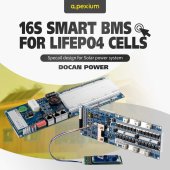Tulex
Solar Wizard
I really have spent dozens of hours reading the threads. The more I read, the less I understand. Mostly because many of the threads are about specific situations, or go off in tangents on how to make things work for a specific situation. So, I'm hoping some of you can answer some general questions/verify some understandings. This is for a Sol-Ark 15K and LiFePO4 batteries. Without narrowing it down by understanding the below, right now reading all the info you all have offered in the hundreds of threads is like trying to learn a dozen different languages at once.
1 - Only certain batteries (partnered) fully communicate with the Sol-Ark as plug and play. Connect the cable, good to go. Any info the Sol-Ark can use is available to it.
2 - Basically, all the other batteries communicate enough to work. But, you have to figure out what to use for settings, mostly based on the BMS?
3 - Can use Solar Assistant (or others?) to get the info off of the batteries. Can the Sol-Ark be connected to Solar Assistant to provide all the info that a plug and play battery provides?
4 - Does it really matter? I asked this in a different existing thread, but should I even concern myself with the communications? Am I not getting the most out of my batteries/shortening the life without full communication?
It seems that a lot of the info available is for how people make things work because of what they have or can get. I'd prefer to get what most easily works because I have the Sol-Ark. So while I can't justify the cost of Sol-Ark partnered batteries, I'd like to find the next best mostly plug and play setup.
I've invested in the Sol-Ark 15K, it's on it's way. It's a huge investment for us as we are close to retirement. I'm aiming at around 30kw of batteries. I'm very capable as a DIYer once I know what I have to do, and am actually very interested in building my own batteries. Bottom line, I need more general info to pick a direction so that I can then research and ask questions directly related to the path I take.
Thanks
1 - Only certain batteries (partnered) fully communicate with the Sol-Ark as plug and play. Connect the cable, good to go. Any info the Sol-Ark can use is available to it.
2 - Basically, all the other batteries communicate enough to work. But, you have to figure out what to use for settings, mostly based on the BMS?
3 - Can use Solar Assistant (or others?) to get the info off of the batteries. Can the Sol-Ark be connected to Solar Assistant to provide all the info that a plug and play battery provides?
4 - Does it really matter? I asked this in a different existing thread, but should I even concern myself with the communications? Am I not getting the most out of my batteries/shortening the life without full communication?
It seems that a lot of the info available is for how people make things work because of what they have or can get. I'd prefer to get what most easily works because I have the Sol-Ark. So while I can't justify the cost of Sol-Ark partnered batteries, I'd like to find the next best mostly plug and play setup.
I've invested in the Sol-Ark 15K, it's on it's way. It's a huge investment for us as we are close to retirement. I'm aiming at around 30kw of batteries. I'm very capable as a DIYer once I know what I have to do, and am actually very interested in building my own batteries. Bottom line, I need more general info to pick a direction so that I can then research and ask questions directly related to the path I take.
Thanks



